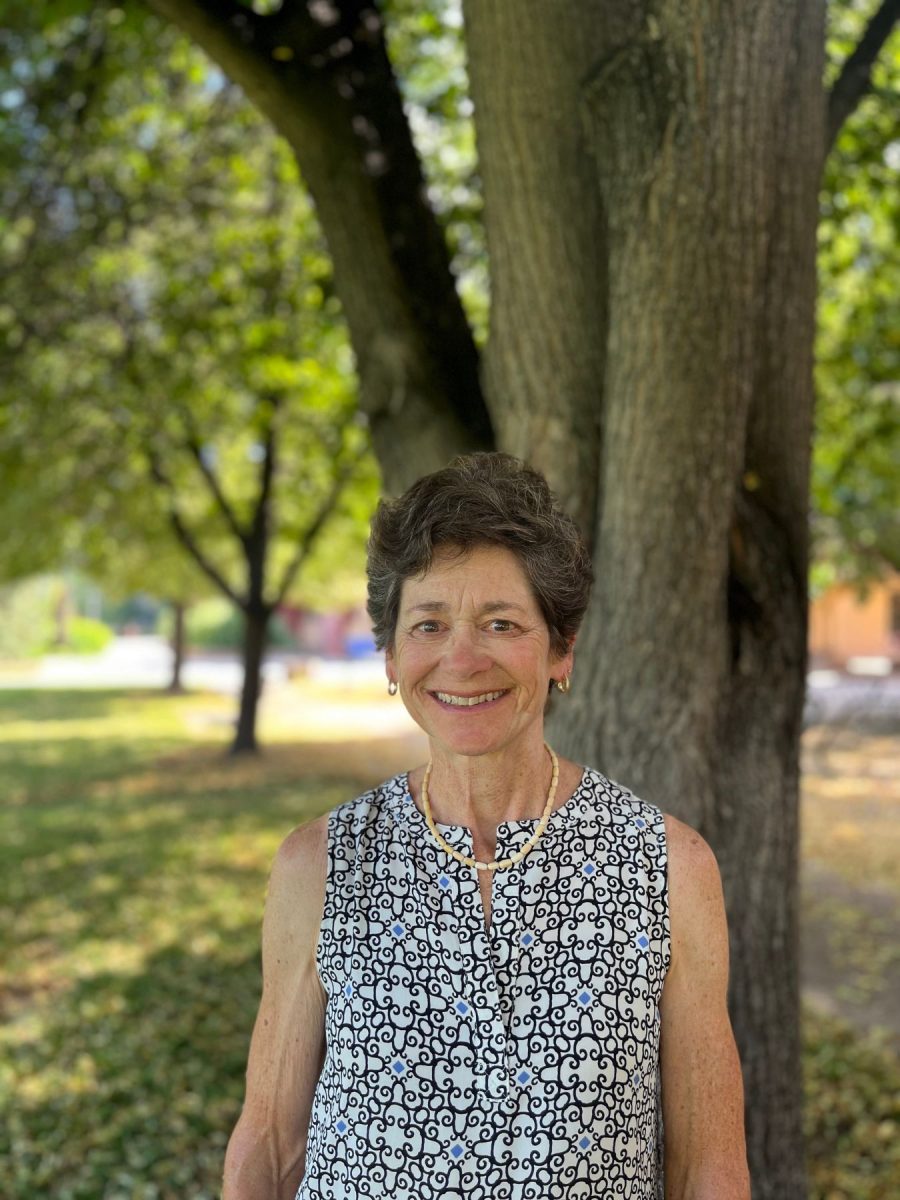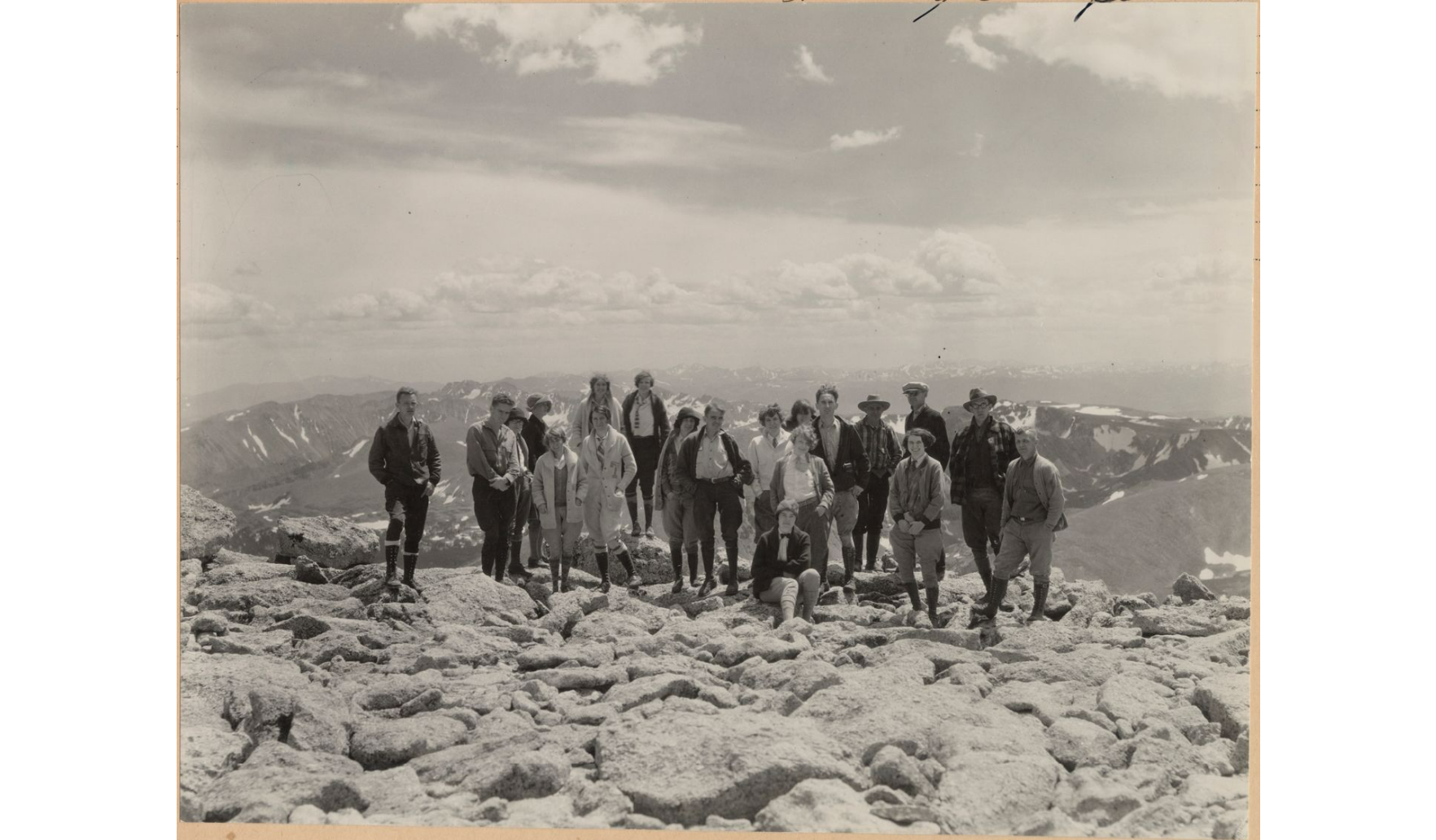
Near the top of the diamond face that makes up the eastern side of Longs Peak within Rocky Mountain National Park runs a horizontal crack that splits the granite. Roughly one-foot-wide, the crack equates to a rounded-edge shelf known as Table’s Ledge and is part of the “Casual Route” for alpinists and climbers who have been climbing that route and others on the diamond since the mid-twentieth century.
The right to climb the face was won in the 1950s due to the advocacy, and in many cases the delinquency, of climbers keen on summiting to the top, in spite of park regulations. “For decades, climbers were becoming much more skilled, and they really wanted to open the diamond. They had never climbed the diamond before, and they really wanted to, but they were told no in the park. And they were really mad at the park for depriving them of the freedom to climb Longs Peak,” says Ruth Alexander, emeritus professor of history.

Nearly 15 years ago, Rocky Mountain National Park approached Alexander and the Public and Environmental History Center to study and create a historical report of the history of climbing, safety management, education, and environmental management of Longs Peak dating back to its formation in 1916.
Though RMNP approached Alexander for the project in her capacity as an environmental historian, it was the confluence of her broad historical expertise and this project that led her down the path of examining park access more broadly.
“I was able to start thinking about the project in a more substantive way, and I realized that what was missing from the original research project was any inquiry into who was able to access our parks and what do our parks stand for,” Alexander says.
“I'm trained not only as an historian of the environment, but as an historian of society, of race, class, gender. I have long training and experience in thinking about questions of human equality, democracy, who gets to sit at the table, doesn't get to sit at the table, and structures of power.
National parks are parks for people. And what does that mean?"
What Alexander discovered in her research about access was a history of displacement of Native and Indigenous Americans and a history of covert and overt discrimination against African Americans.
That history and the question of access to national public lands lead Alexander to write the book Democracy’s Mountain (University of Oklahoma Press, 2023), where she explains how the National Park Services both fulfills and falls short of three obligations: to facilitate visitor enjoyment; protect natural resources; and manage the park as a site of democracy.
The book’s emphasis on race at Rocky Mountain National Park began to take shape for Alexander after studying a transcript of park superintendents who met in 1922 and discussed how to respond to African Americans who wished to visit national parks.

"Basically, what they [the National Park Service] said was we cannot exclude them deliberately,” Alexander reports. “What they said, though, was we can let them know that we aren't able to serve them.” As this was the Jim Crow era, separate facilities were required and the Park couldn’t or wouldn’t accommodate that. The Park’s philosophy then influenced the town of Estes Park who barred the service of African Americans all while allowing African Americans to serve white tourists in the area in hotels and local restaurants.
The removal of Native American tribes, like the Ute and Arapahoe people, from the entirety of the areas of Rocky Mountain National Park made for Estes Park and the surrounding areas to become a place white people could solely envision and create for themselves.
“Arapahoe bands who had hunted in the Estes Valley moved to southern Wyoming in the late 1860s and were escorted by the U.S. Army to the Wind River Reservation in 1878...By 1880, with the removal of White River and Uncompahgre Utes to the Uintah and Ouray Reservation in Utah, all Native Americans in Colorado had been dispossessed of their homelands, the consequence of two decades of intensive migration by Euro-Americans...” Alexander writes in Democracy’s Mountain.

Over 100 years since that meeting, the goals of the NPS have changed and is now listening to and working with many of the groups who were once excluded from having a say in parks such as tribal nations, Latine communities, African American communities, and the Rocky Mountain Conservancy on park management, to improve the diversity of the park and the telling of the parks history.
“A lot of people started asking, why are our parks so white? And the park now in part through legislation and in part just through change in park culture, recognizes its role in educating Americans about democracy and about supporting democracy,” Alexander says. “That means also putting in place changing programing, changing the way park history is told, in the way the national story is told, and developing sites that highlight the diverse history of this nation.”
Striving for better in our democratic institutions is never easy, and in Democracy’s Mountain Alexander never suggest as much, only that these obligations can be fulfilled and that our National Parks can better fulfill their promises and include the voices and histories of its people, not as visitors but as citizens.
“We all have to think long and hard about the complexities of sustaining a democracy and looking out for one another's well-being and debating the policy that will do that the best. Citizenship is complex, and it means thinking about who you are in relation to other people,” she says.
